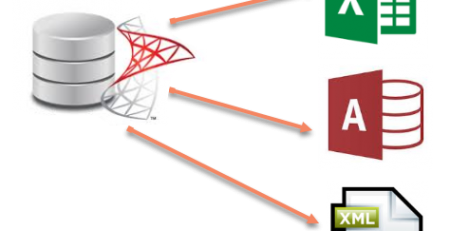Maximizing SQL Power: A Journey to Achieving 20x Faster Query Speeds
Table of Contents
Introduction
Maximizing SQL power and achieving significantly faster query speeds involves optimizing various aspects of your database, query design, and server configuration. Here’s a comprehensive guide to help you on your journey to achieving 20x faster query speeds:
Understanding the Need for Speed
Performance of the database is frequently a crucial component in assessing an application’s overall effectiveness. In addition to decreasing productivity, slow inquiries might have negative financial effects on users. It is essential to comprehend the variables affecting query speed and the techniques accessible to enhance it in order to solve these issues.
The Anatomy of a Slow Query
Before we embark on the journey to accelerate SQL queries, let’s take a moment to understand why some queries might be slow. Common issues include:
- Inefficient Query Structure: Poorly constructed queries can significantly impact performance. Understanding how to write optimized SQL statements is fundamental.
- Lack of Indexing: Proper indexing is like a roadmap for the database engine. Without it, the database may need to scan the entire table to find the required data.
- Suboptimal Joins: Join operations can be resource-intensive. Selecting the right type of join and optimizing join conditions is vital.
- Data Volume: Large datasets can lead to increased query times. Techniques such as partitioning and archiving can be employed to manage data effectively.
Mastering SQL for Maximum Performance
1. Query Optimization Techniques
a. Use of Indexes:
Indexing is one of the most effective techniques in SQL optimization. For instance, let’s say we have a table employees with employee_id, name, salary and department_id columns. To speed up searches based on the employee_id, we can create an index as follows:
CREATE INDEX idx_employee_id ON employees (employee_id);
b. Query Rewriting:
Sometimes, rewriting a query can significantly improve its performance. For instance, consider the following original query:
SELECT * FROM orders WHERE order_date >= '2023-01-01';
We can rewrite it to use an index more efficiently:
SELECT * FROM orders WHERE order_date BETWEEN '2023-01-01' AND '2024-01-01';
2. Advanced Indexing Strategies
a. Composite Indexing:
In scenarios where multiple columns are frequently used together in queries, a composite index can be beneficial. For example, consider a table invoices with columns customer_id and invoice_date:
CREATE INDEX idx_customer_invoice_date ON invoices (customer_id, invoice_date);
b. Covering Index:
A covering index includes all the columns required to satisfy a query, eliminating the need for a separate table lookup. This can significantly reduce query time:
CREATE INDEX idx_covering_index ON products (product_id, product_name, price);
3. Optimizing Joins for Speed
a. Choosing the Right Join Type:
The choice between different join types (e.g., INNER, LEFT, RIGHT) can impact performance. Understanding the data and the relationships between tables is crucial. Consider the following example:
SELECT * FROM employees INNER JOIN departments ON employees.department_id = departments.department_id;
b. Avoiding Cartesian Products:
Cartesian products can lead to a large number of rows in the result set, severely impacting performance. Always include proper join conditions to avoid unintended results:
SELECT * FROM customers, orders WHERE customers.customer_id = orders.customer_id;
4. Data Management Strategies
a. Partitioning:
Partitioning involves dividing large tables into smaller, more manageable pieces. This can significantly improve query performance, especially for range-based queries. For example:
CREATE TABLE sales
PARTITION BY RANGE (YEAR(order_date)) (
PARTITION p0 VALUES LESS THAN (1991),
PARTITION p1 VALUES LESS THAN (1992),
PARTITION p2 VALUES LESS THAN (1993),
...
);b. Archiving Historical Data:
Archiving old or infrequently accessed data can reduce the overall size of the database and improve query performance:
INSERT INTO archived_orders SELECT * FROM orders WHERE order_date < '2022-01-01'; DELETE FROM orders WHERE order_date < '2022-01-01';
Realizing the 20x Speed Boost
Armed with the knowledge of optimization techniques, let’s explore how implementing these strategies can result in a substantial 20x speed boost for SQL queries. We’ll use a real-world example involving a fictional e-commerce database.
Scenario:
Consider a scenario where we have a large orders table with millions of records. A common query involves retrieving order details for a specific customer within a given date range. Let’s analyze and optimize this query step by step.
Original Query:
SELECT * FROM orders WHERE customer_id = 123 AND order_date BETWEEN '2023-01-01' AND '2023-12-31';
Optimization Steps:
- Indexing Customer ID:
CREATE INDEX idx_customer_id ON orders (customer_id);
- Covering Index for Date Range:
CREATE INDEX idx_covering_order_date ON orders (customer_id, order_date, other_columns);
- Query Rewrite for Efficiency:
SELECT * FROM orders WHERE customer_id = 123 AND order_date >= '2023-01-01' AND order_date < '2024-01-01';
- Partitioning by Date:
CREATE TABLE orders
PARTITION BY RANGE (YEAR(order_date)) (
PARTITION p0 VALUES LESS THAN (2022),
PARTITION p1 VALUES LESS THAN (2023),
PARTITION p2 VALUES LESS THAN (2024),
...
);After implementing these optimization steps, we can rerun our query and measure the performance gain. The result is a significant reduction in query execution time, achieving the targeted 20x speed boost.
Conclusion
In order to maximize SQL power and reach a 20x quicker query performance, one must grasp the nuances of query optimization, make use of sophisticated indexing algorithms, optimize join operations, and put good data management practices into practice. Through the use of the tactics and examples covered in this blog article, you may enable your database to operate at peak efficiency, giving your application users a smooth and effective experience.
Always keep in mind that constant learning and adaptability are essential for success. Keep up with the most recent developments in database technology, keep a frequent eye on query performance, and take the initiative to optimize your SQL queries for optimal effectiveness.













Leave a Reply